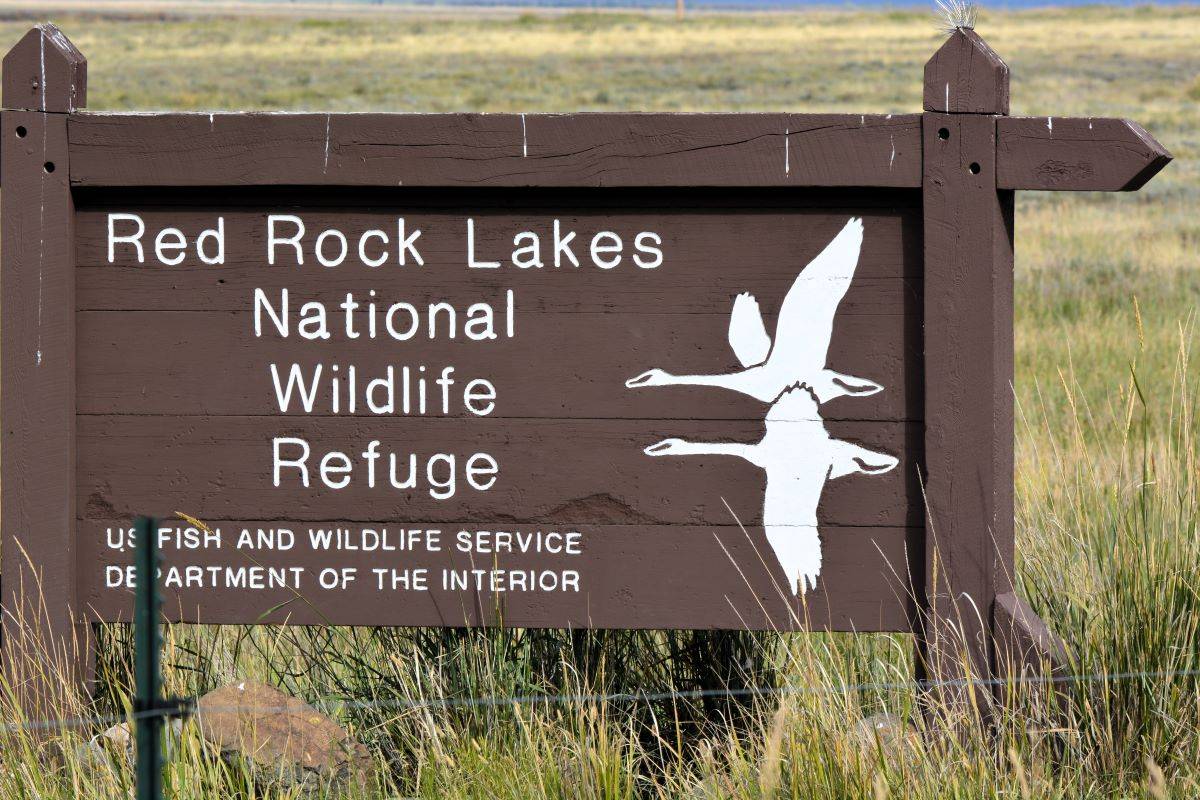
The Road Trip
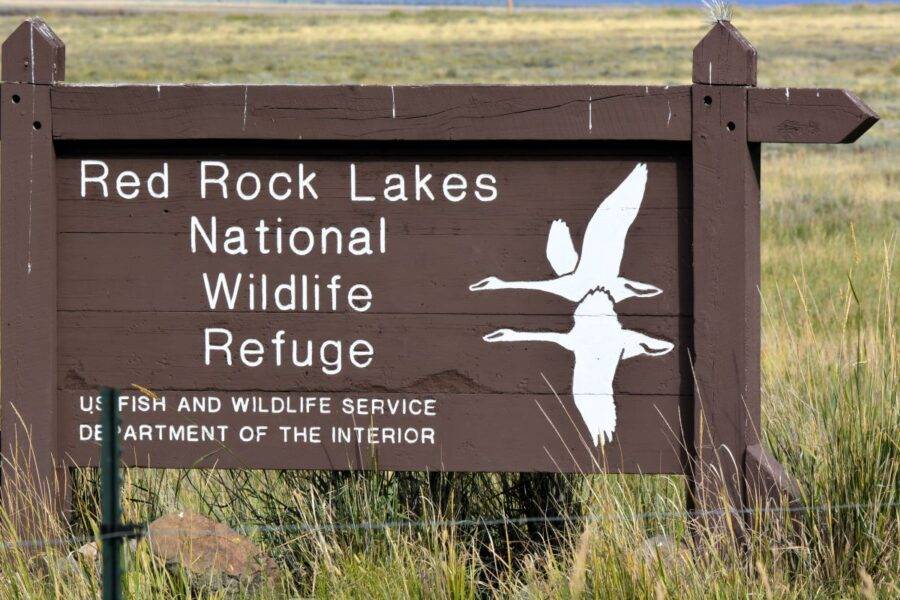

Early in 2022, while reading a book titled America’s National Wildlife Refuges, I became enthralled with a refuge in southwestern Montana called Red Rock Lakes. According to the book’s author, the refuge was established in 1935 to help rescue the trumpeter swan—America’s largest waterfowl species—from extinction. “You should see this,” I said to Kathy. “I’ve never seen a trumpeter swan, a moose, or a grizzly bear in the wild. This refuge has them all!”
“What’s stopping us?” said Kathy. “Why don’t you do some research and plan a trip for next fall.”
My enthusiasm was palpable: I spent the next nine months planning and making bed-and-breakfast reservations. What started out as a week-long road trip to western Montana ended up being a nineteen-day, 8,000-mile wildlife adventure through five states: California, Oregon, Idaho, Montana, and Wyoming.
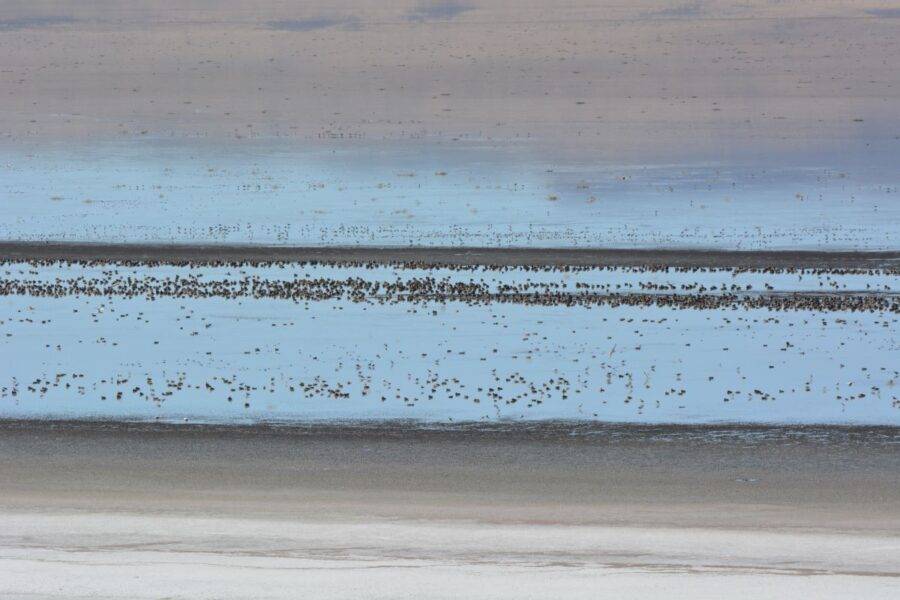

Our first day’s destination was the Hines Pine Mill House bed and breakfast, in Hines, Oregon. We drove for six hours through northeastern California and the sagebrush-strewn plains of southeastern Oregon to get there. Along the way, we came to a fifteen-mile-long, alkaline body of water called Lake Abert. Kathy and I had concluded that Lake Abert was void of life until we arrived at the north end and discovered thousands of ducks, geese, and other water birds gorging themselves on swarms of newly hatched brine flies.
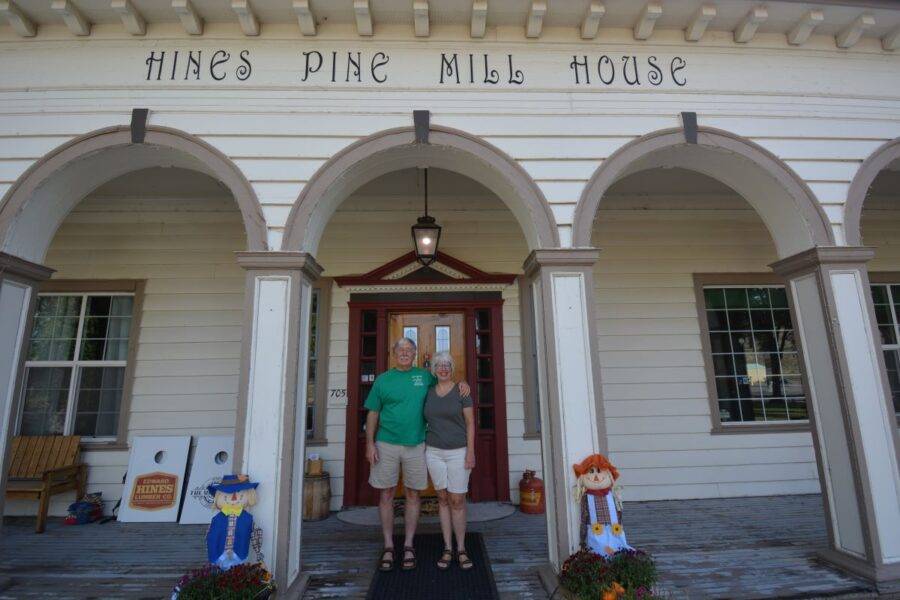

Hines Pine Mill House is a 1920s-era, converted lumber-mill office owned and operated by our new friends, Roger and Shani Hodge. Entering the old millhouse was like stepping back in time: the antiquities inside were fascinating and Roger regaled us with stories of southeastern Oregon’s colorful past. Breakfast the next morning was all we could have hoped for. Kathy and I found this to be the perfect stopover on our way to Red Rock Lakes National Wildlife Refuge, Yellowstone National Park, Glacier National Park, and beyond .
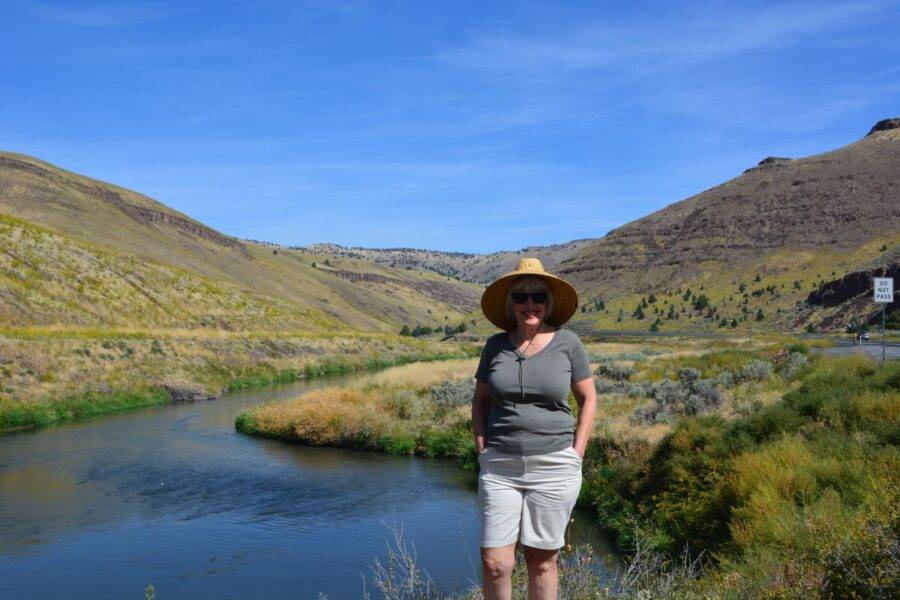

Day two found us driving through eastern Oregon’s scenic Malheur River canyon (shown here). From there, we crossed the Snake River into Idaho and followed Interstate 84 all the way to Twin Falls. That evening, we dined at a restaurant overlooking the Snake River Canyon and enjoyed a good-night’s rest at the Fillmore Inn—Denise Johnson, proprietor. Kathy wrote in our trip diary that Denise was a real sweetheart. Breakfast was delicious. We shared it, along with some good conversation, with Denise and a delightful couple from Sacramento who turned out to be fellow bird-watchers.
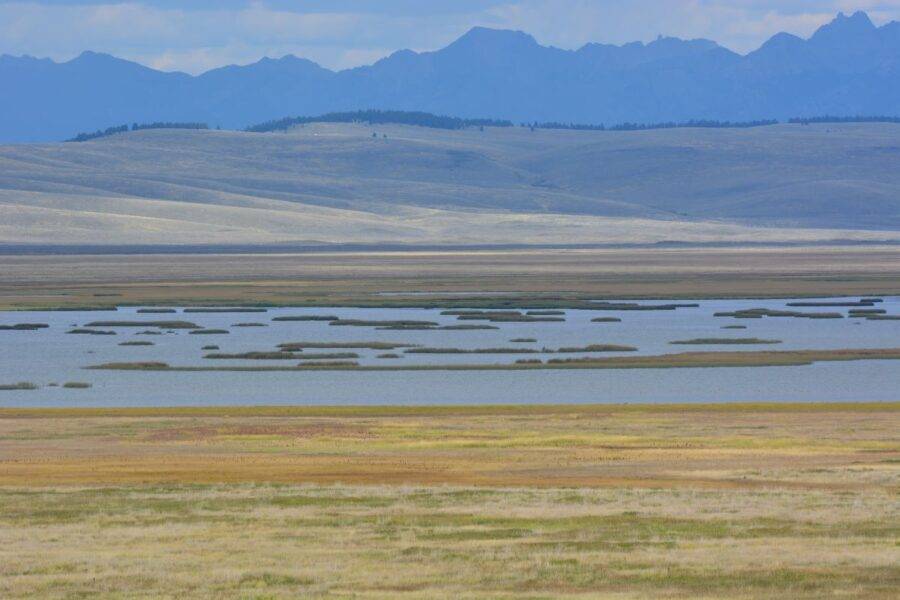

Our first glimpse of Red Rock Lakes National Wildlife Refuge came on the third afternoon of our trip. The weather was cool and the clouded sky was spitting raindrops when we left the pavement at Monida and ventured across the Centennial Valley into the wilds of Montana. Kathy and I were blown away by the vastness of the landscape. I couldn’t help wondering how I was going to spot a moose or a grizzly bear, let alone a trumpeter swan, way out there.
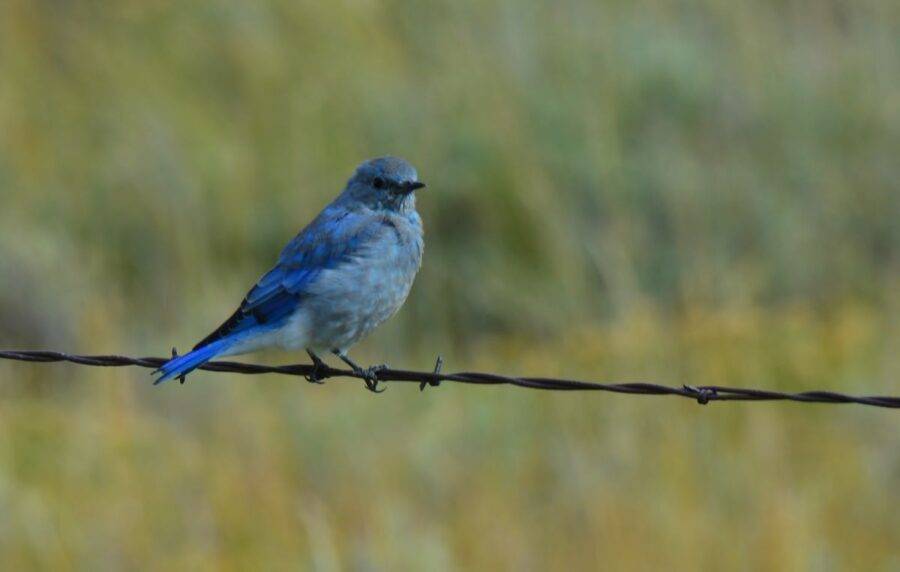

Mountain bluebirds like this one greeted us as we passed through Red Rock Lakes National Wildlife Refuge on our way to nearby Elk Lake Resort, our home away from home for the next two nights.
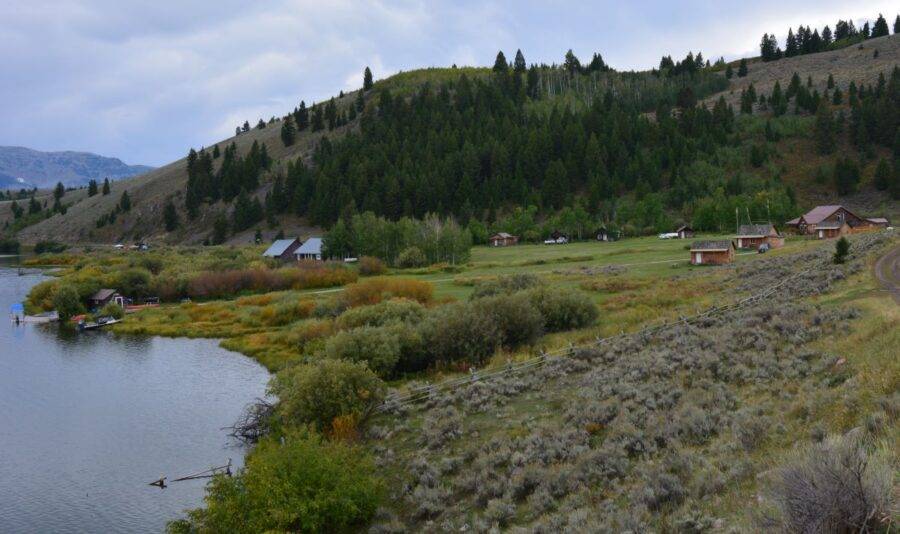

Elk Lake Resort is nestled between mountains on the north and Elk Lake on the south. We didn’t put a line in the water on this trip but were greeted each morning with stories about trophy cutthroat trout. Owners Jake and Laurel DeLong fed us like kings. Breakfast and dinner were so good, we skipped lunch.
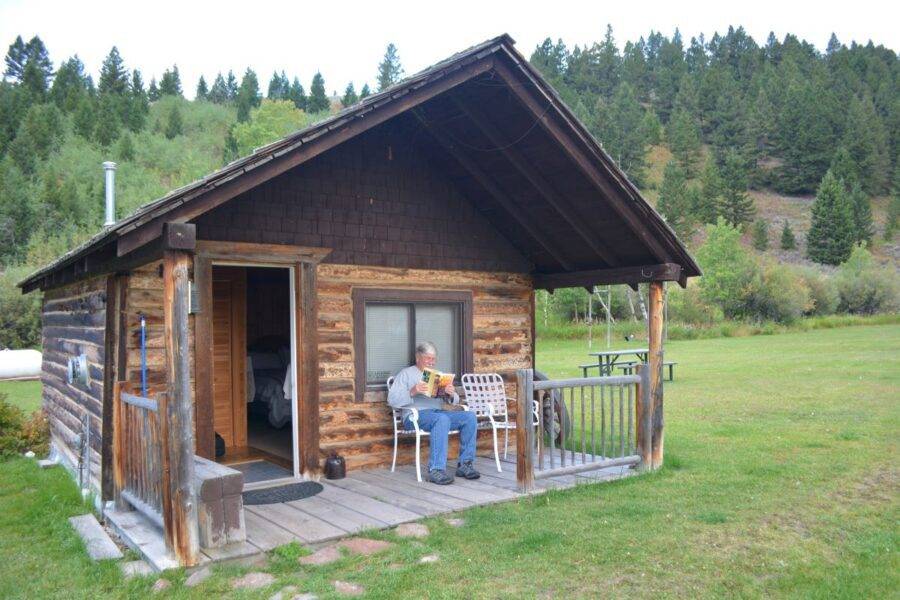

Kathy caught me reading up on Red Rock Lakes National Wildlife Refuge in preparation for the day’s outing. Our immaculate one-room cabin provided everything we needed—a bed to sleep in, indoor plumbing, and solar-powered lighting.
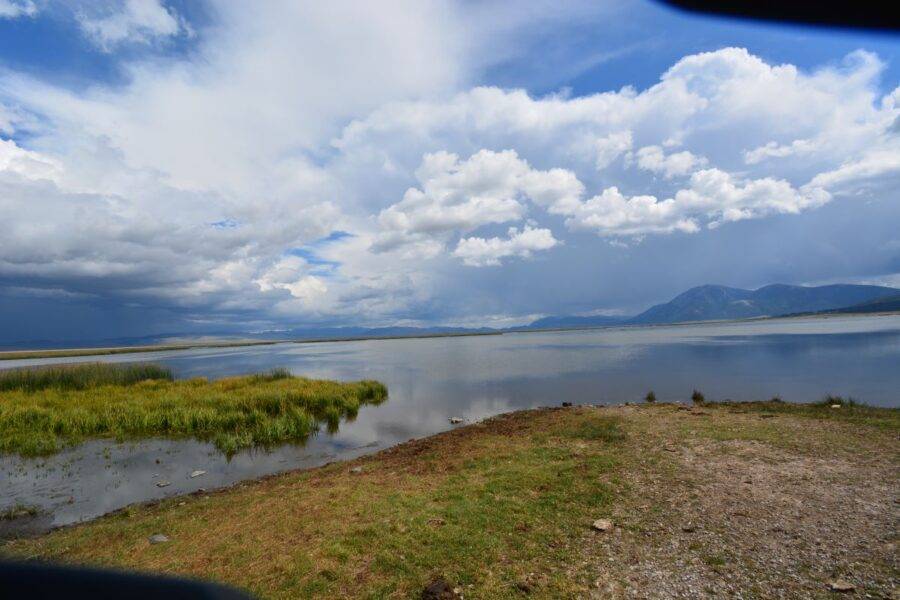

Kathy and I entered Red Rock Lakes National Wildlife Refuge brimming with anticipation and excitement. We hadn’t driven a half mile when we came upon a sign warning visitors to beware of grizzly bears. “Did you see that?” I said, looking down at the telephoto camera lens that lay across my lap. “It’s gonna be a great day!”
“I think so too,” said Kathy, spotting a large raptor perched atop one of the wooden fenceposts up ahead.
We spent the rest of the morning and most of the afternoon enjoying the wildlife and the spectacular scenery. Still no bears, moose, or trumpeter swans, but I loved the serenity of the 45,597-acre property and reveled in the idea that we might have been the only visitors there.
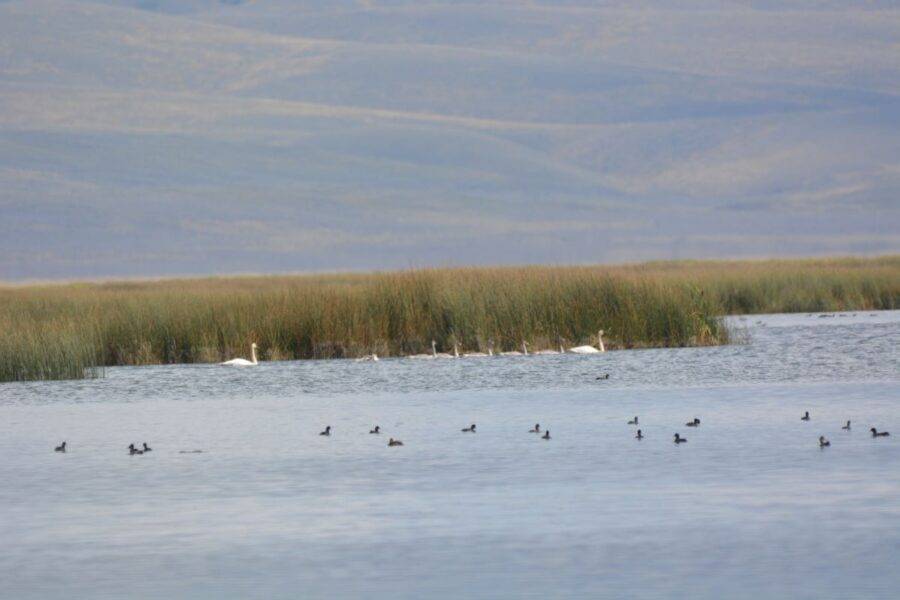

Our first trumpeter sightings came late in the afternoon on our second day at the refuge. This family of eight was a long way off, but that didn’t detract from our excitement. By the end of the day, Kathy and I had seen twelve adult trumpeter swans and nine cygnets. Thanks to farsighted decision-makers, federal protection, and the creation of sanctuaries like this one, numbers of this twenty-five-pound icon of the waterfowl world have increased to a stable level.
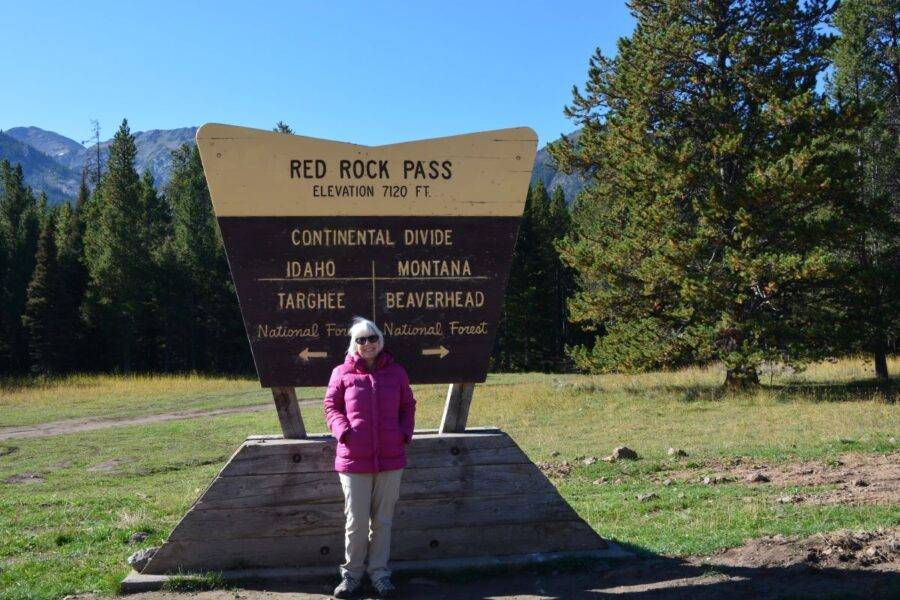

On September 14, the fifth morning of our road trip, we said goodbye to the folks at Elk Lake and headed east toward West Yellowstone. Our plan was to check in at West Yellowstone Bed and Breakfast, our home for the next three nights, and make it to Hayden Valley before the sun went down. I had read that Hayden Valley and Lamar Valley were the best places in Yellowstone National Park to see wildlife.
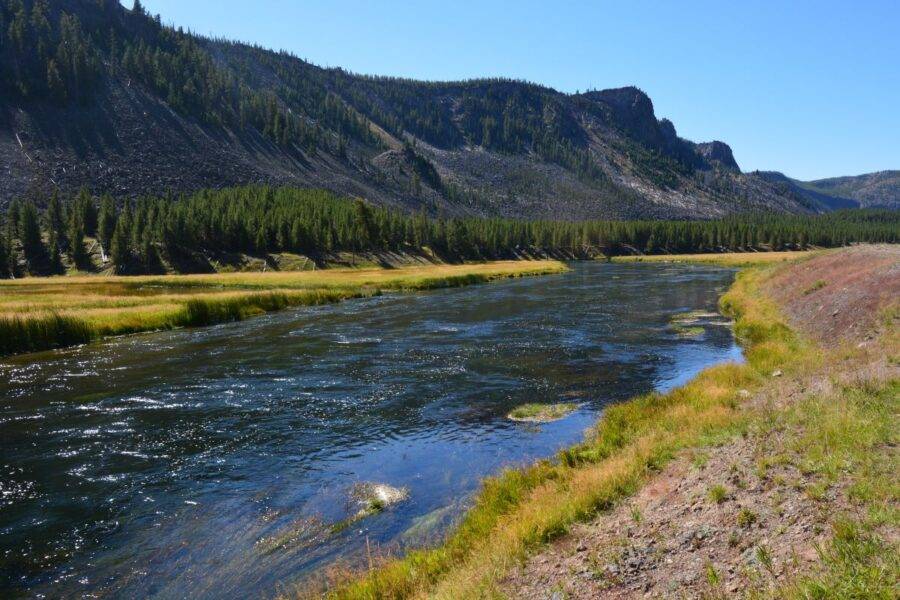

Entering Yellowstone National Park for the first time, Kathy and I were captivated by the Madison River’s unparalleled natural beauty.
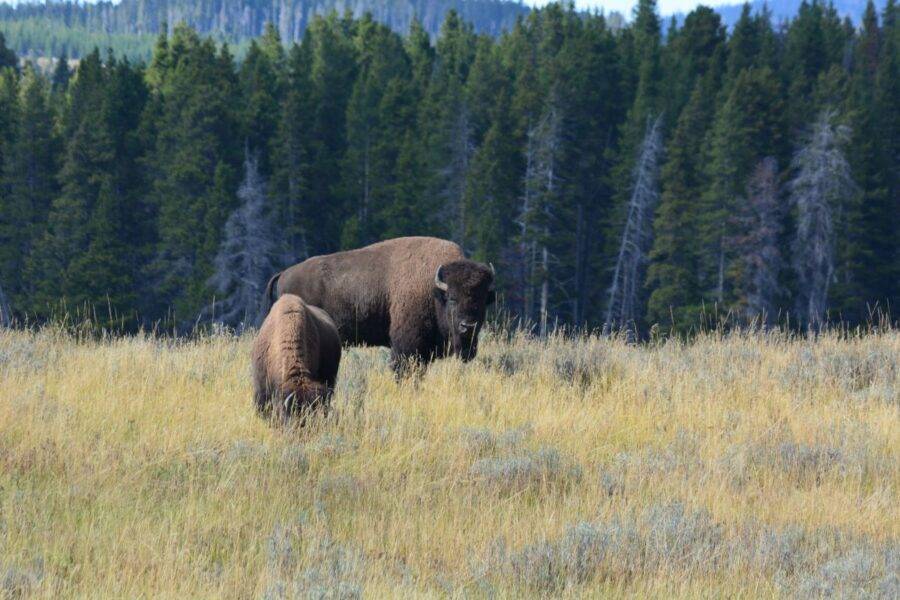

As advertised, bison were plentiful in Hayden Valley. I photographed this handsome bull in his natural habitat and avoided many photo ops near or on the road.
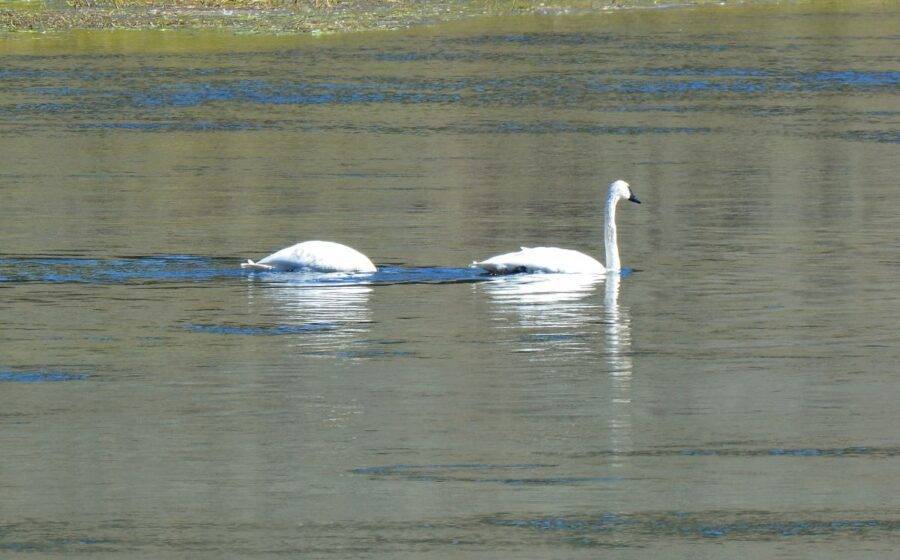

While at Hayden Valley that first afternoon, my camera lens was drawn to a pair of trumpeter swans feeding on water grass in the Yellowstone River. I learned that Yellowstone National Park hosts two small trumpeter swan flocks: residents like these all year and a larger group that visits during the winter months.
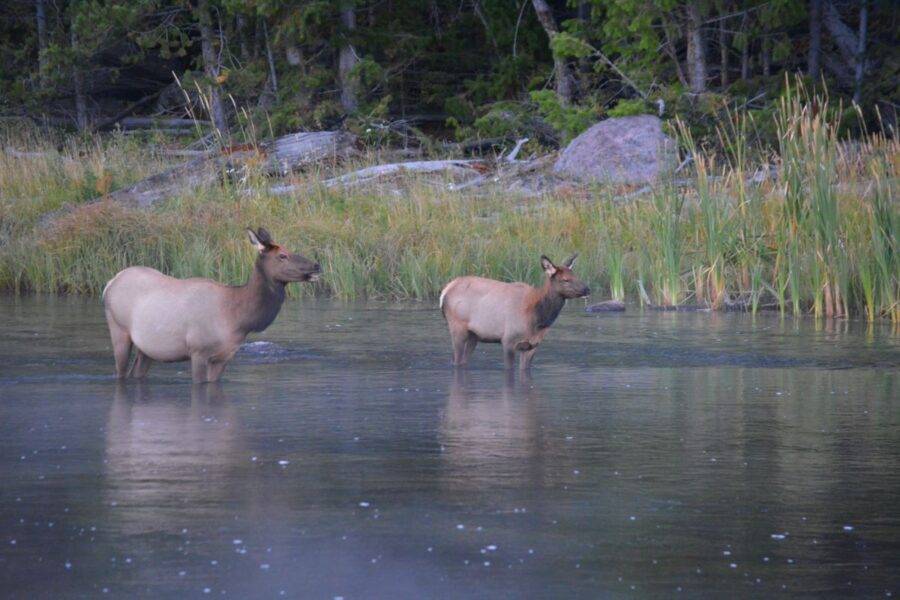

Deborah Clark, our gracious host at West Yellowstone Bed and Breakfast, provided Kathy and me with a wholesome sack breakfast each morning so we could be at the park by daylight. I photographed this cow elk and her calf standing in the Madison River minutes after sunrise.
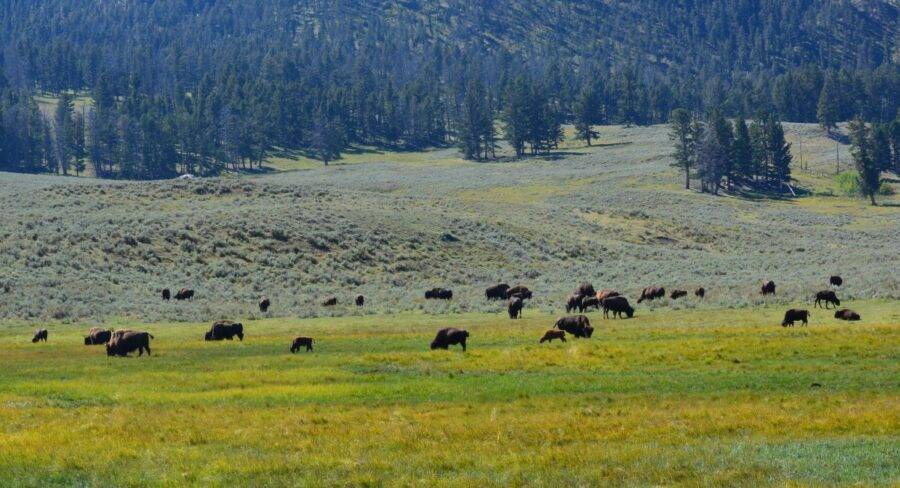

Lamar Valley provided a glimpse of what parts of North America might have looked like in the early 1800s.
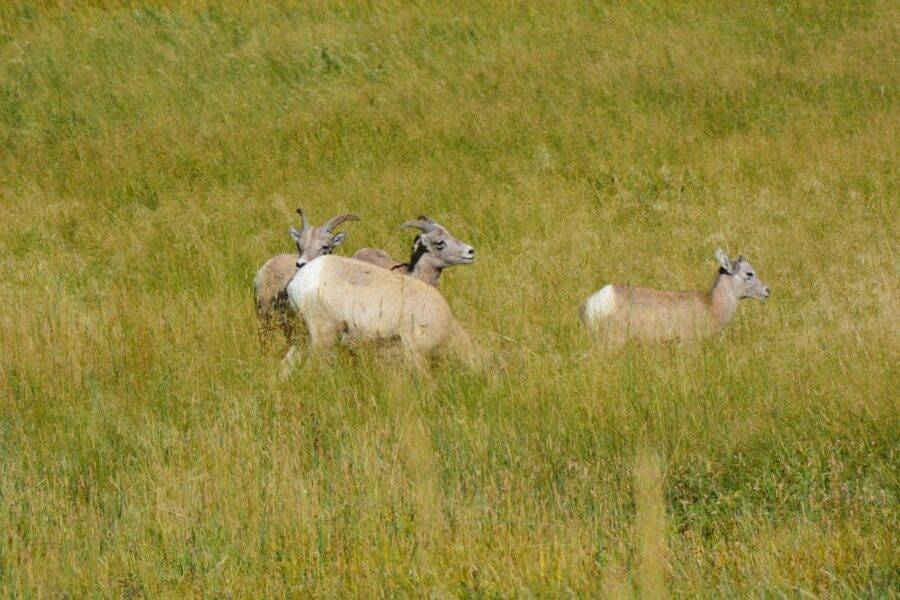

I didn’t expect to see bighorn sheep the day we visited Lamar Valley, but this small flock of ewes and a single lamb trotted down from the mountain. Using a park ranger’s patrol car to steady my camera lens, I snapped this photo before the sheep disappeared into the high grass. When the ranger returned from directing traffic, he said, “Since you’re a taxpayer, I guess it’s all right for you to lean against my car.” We both laughed.
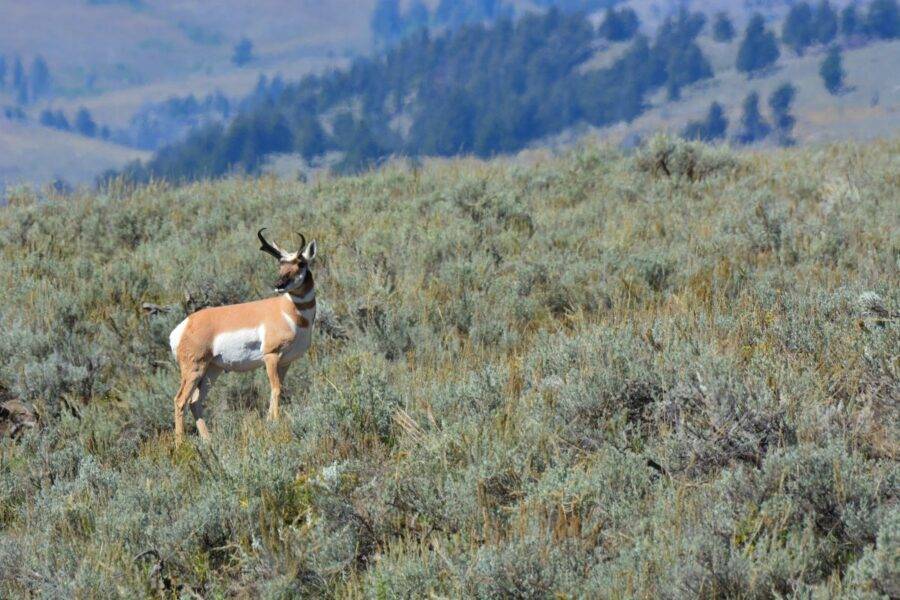

Pronghorns were fairly common throughout our trip through Montana and Wyoming. I photographed this handsome specimen at the northeast end of Lamar Valley. Being the fastest land animal in North America, it didn’t take him long to streak across the valley floor, cross the road in front of us, and escape whatever predator—possibly a wolf or grizzly bear—had caused him concern. Pronghorns are gifted with keen eyesight and are able to spot predators from miles away.
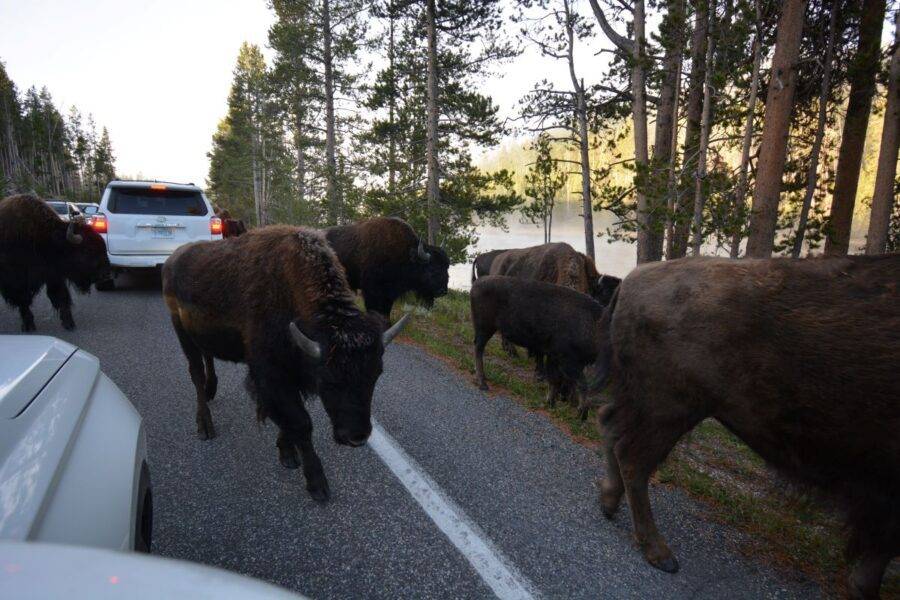

I tried to avoid photographing scenes like this, but a trip to Yellowstone wouldn’t be complete without encountering a herd of bison in the roadway.
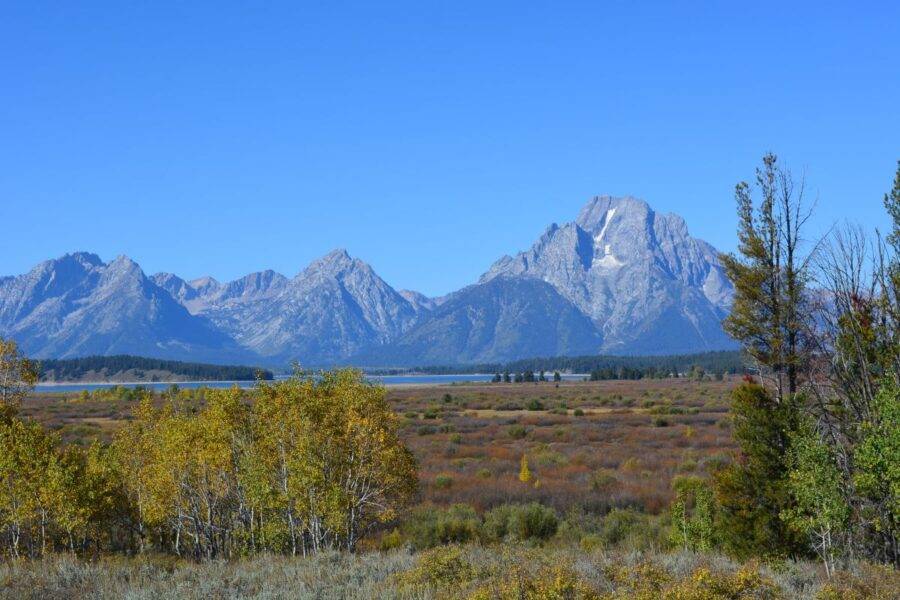

Our view of the Tetons on September 17 was obscured by smoke that had drifted down from Canada, but this famous mountain range was still a sight to see. At this point on our trip, I had seen and photographed trumpeter swans, pronghorns, bighorn sheep, elk, and lots of bison but had seen no sign of a moose or grizzly bear.
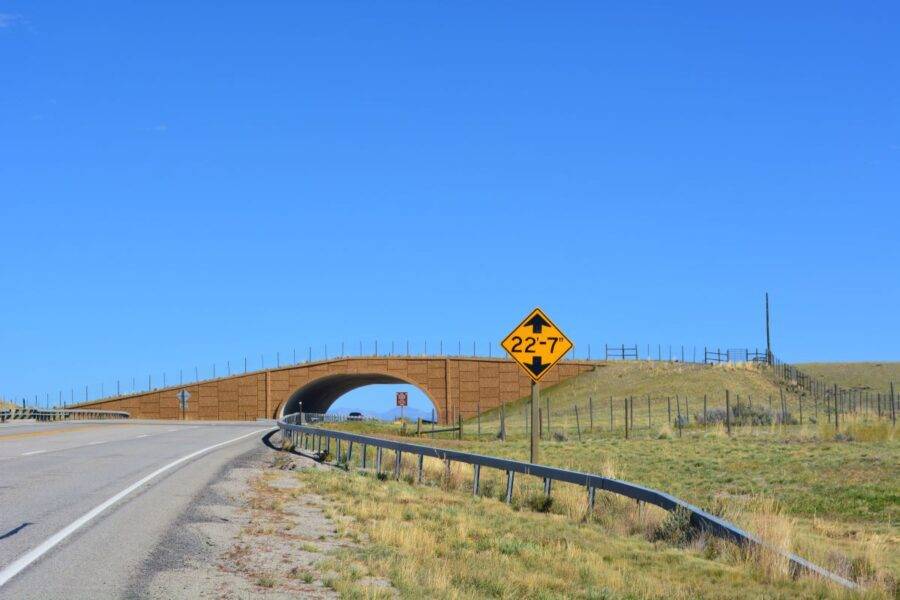

Driving south on Highway 191 near Pinedale, Wyoming, we came to one of Wyoming’s wildlife overpasses, designed to protect one of North America’s longest mammal migrations and reduce wildlife-vehicle collisions. Miles of fences were placed strategically along the road to funnel pronghorns, deer, elk, and other large mammals across the overpass and away from the deadly highways. Kathy and I are proud that California is also creating safe passageways across highways—some by bridge, like the one in this photograph, and some by tunnel. Currently, the world’s largest animal-crossing overpass is being built in Agoura Hills, north of Los Angeles.
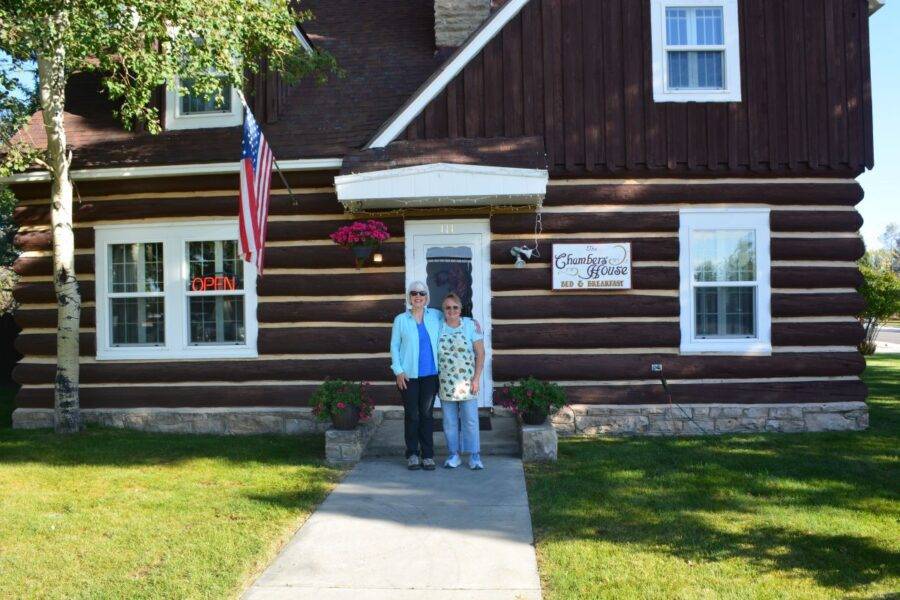

One of the highlights of our road trip was staying at the Chambers House Bed and Breakfast, in Pinedale, Wyoming. We enjoyed meeting and getting to know our host, Ranae Stead, who shared our love of and passion for nature. This wonderful little town—population 2,262 friendly people—reminded me of my hometown of Orland, California, in the 1960s.
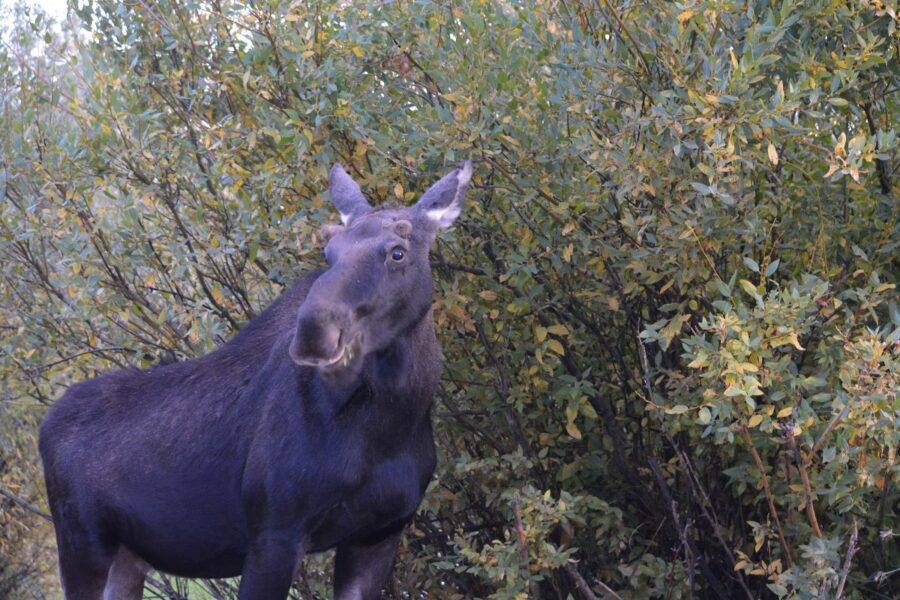

Soon after arriving at the Chambers House, I mentioned to Ranae that I had never seen a moose in the wild and hoped to photograph one somewhere on our trip. My eyes lit up when Ranae said moose sometimes ventured from the stream that ran through town and fed on vegetation at the edge of the city parks. That evening, Kathy and I discovered this young bull. Keeping our distance, we watched him peacefully munch on willows until the sun went down.
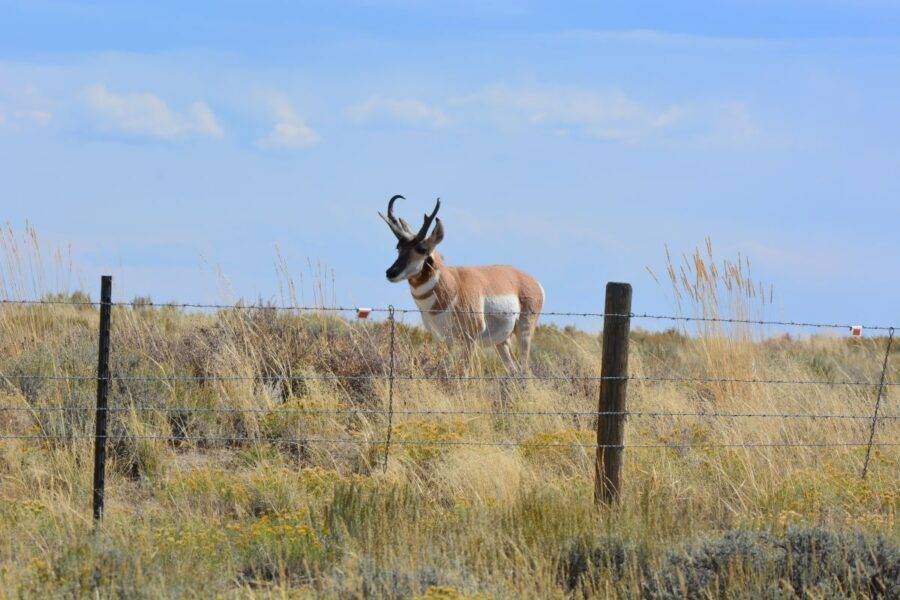

Our plan was to drive all the way to Laramie, Wyoming, on September 18 and visit Seedskadee National Wildlife Refuge along the way. We didn’t have time to adequately explore Seedskadee and still get to Laramie by nightfall, so I photographed this classic pronghorn buck and vowed to come back when we had more time. In spite of cutting our refuge visit short, we didn’t arrive at our bed and breakfast, The Mad Carpenter Inn, until 8:30. Accommodations were great, and breakfast the next morning was phenomenal! We said goodbye to our hosts, Lawrence and Danny Rue Thomas, and headed north toward Medicine Bow.
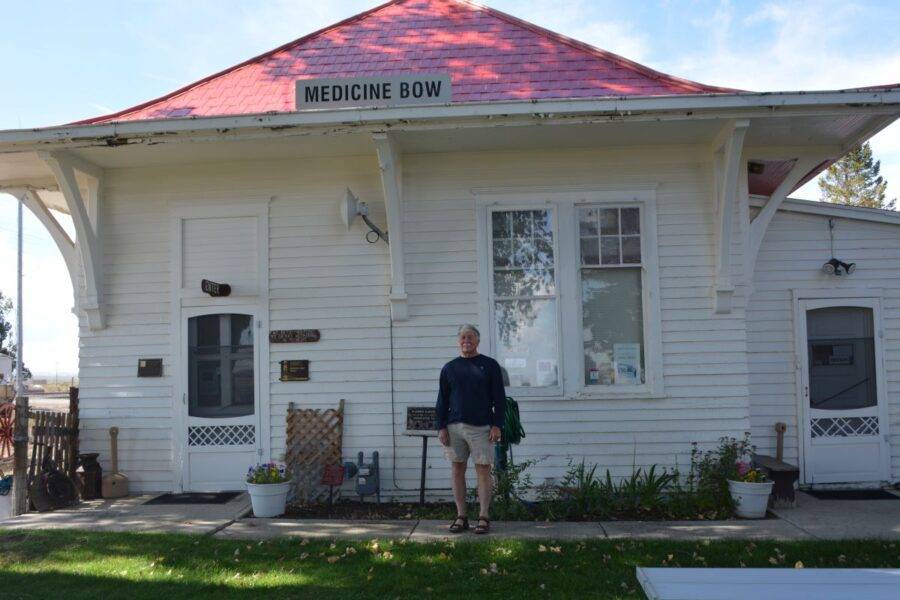

In case you’re wondering, The Virginian western TV series of the 1960s and early 1970s was filmed in California. The real Medicine Bow (population 245), where the story is set, is situated on the plains of Wyoming. This old train depot had been turned into a museum.
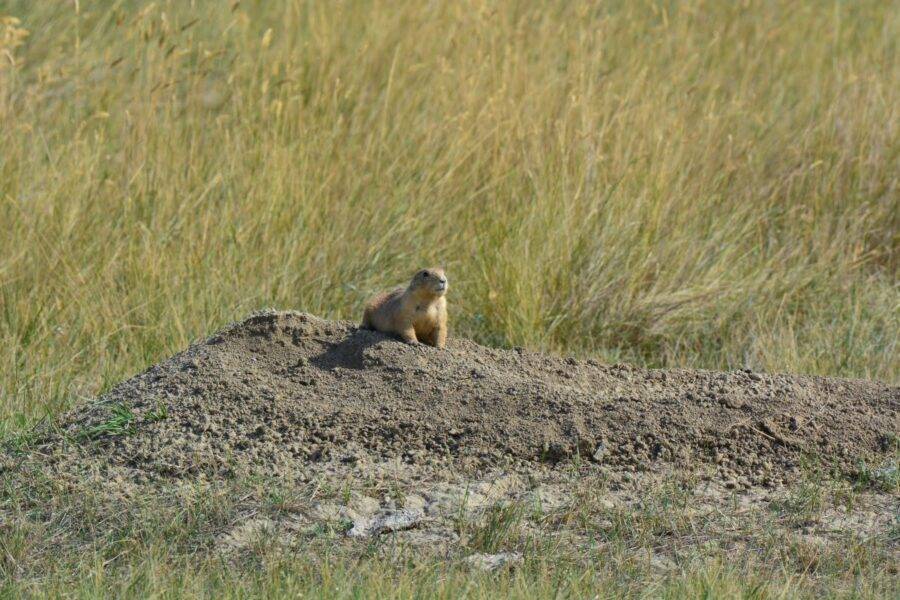

On September 20, Kathy and I were driving north on Interstate 25 toward Sheridan, Wyoming, when we discovered an abandoned highway and decided to find out where it led. Much to our surprise, it led to what Winston Hibler described as a prairie-dog town in the 1950s Disney movie The Vanishing Prairie. Just like in the film, these wary rodents—twice the size of a California ground squirrel—sat up and chirped when they sensed danger.
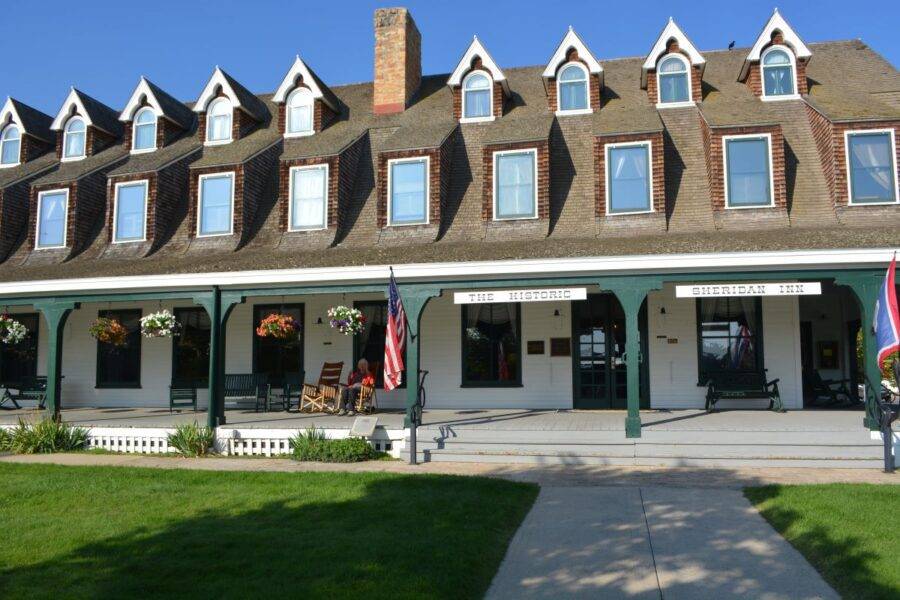

Kathy and I spent that evening in Sheridan, Wyoming, and slept in the historic Sheridan Inn. Each of the rooms is named after a prominent figure of the American frontier. Ours was the Robert Yellowtail Room. Born in 1889, Yellowtail obtained a law degree and spent most of his adult life advocating for his beloved Crow Nation.
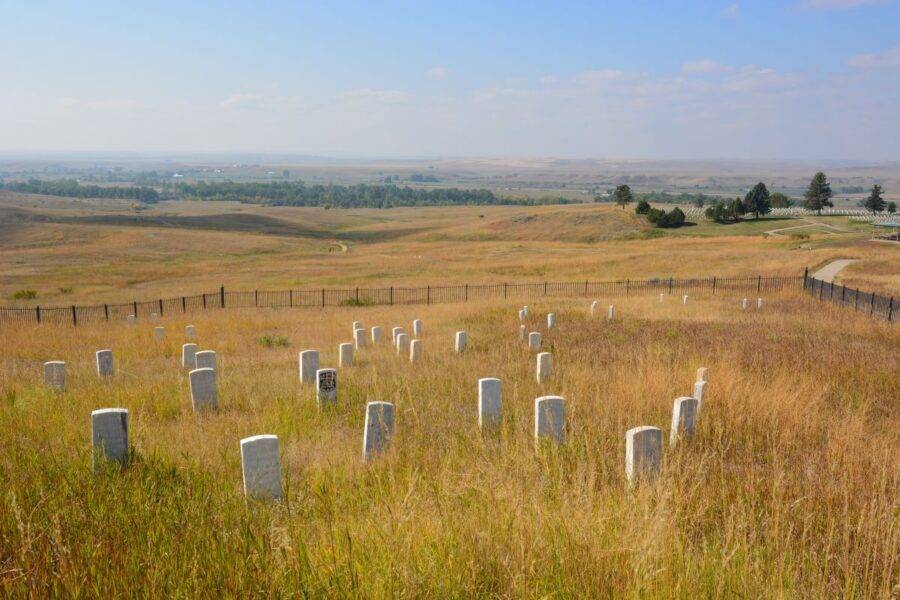

September 21 turned out to be the only solemn day of our road trip. We crossed from Wyoming back into Montana and paid our respects to all the people, including the Native Americans, who lost their lives in the Battle of the Little Big Horn.
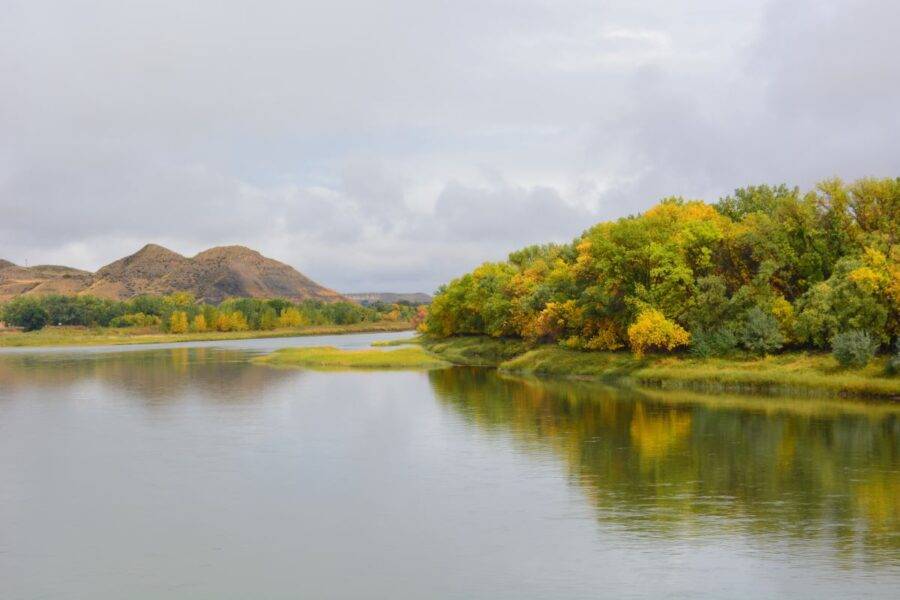

We’d read with great interest that Fort Benton, Montana, was once the northernmost point that steamboats could travel on the Missouri River. Our original plan was to spend two nights in historic Fort Benton, exploring the Upper Missouri Breaks National Monument during the daylight hours. Heavy rains prevented us from driving to the Upper Missouri Breaks, so we took a self-guided history walk around Fort Benton and enjoyed the local scenery.
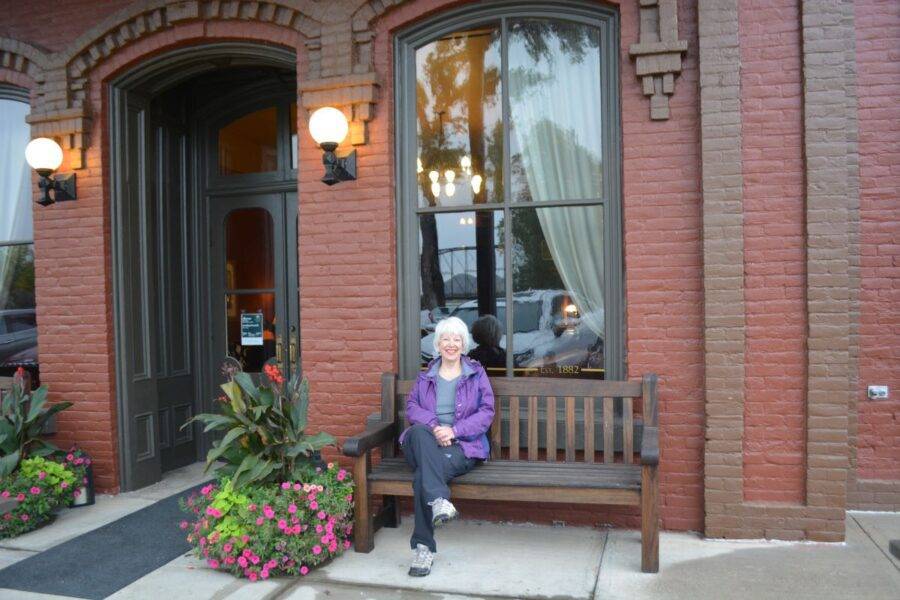

While in Fort Benton, we stayed at the historic Grand Union Hotel, built in 1882. I took this photograph of Kathy on the morning of September 23, before leaving for Missoula.
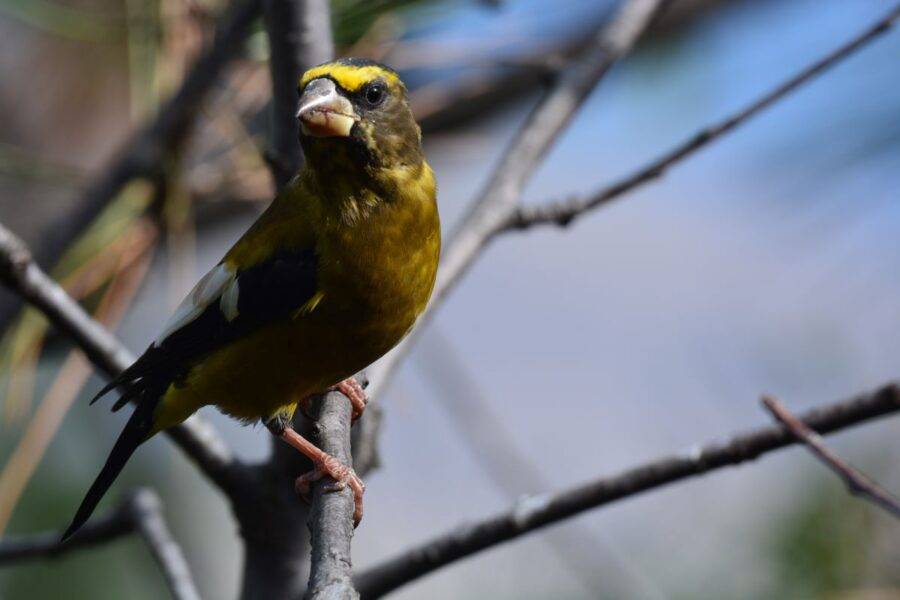

The Blue Mountain Bed and Breakfast, in Missoula, Montana, was to be our home base while visiting the national Bison Range, near Moiese, Montana, and Glacier National Park, near the border between Montana and Canada. I photographed this evening grosbeak and a red-breasted nuthatch from the bed and breakfast’s deck.
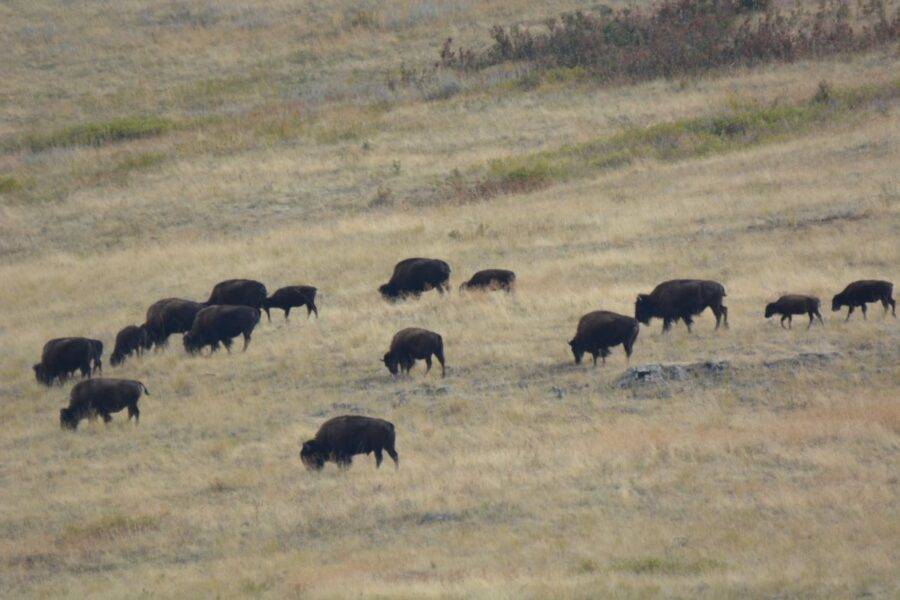

I had heard stories about the national Bison Range for years and was looking forward to our visit. This wildlife refuge was established in 1908 to help save the American bison from extinction. Bison once ranged across America’s plains by the millions. By 1889, all but a few hundred were gone.
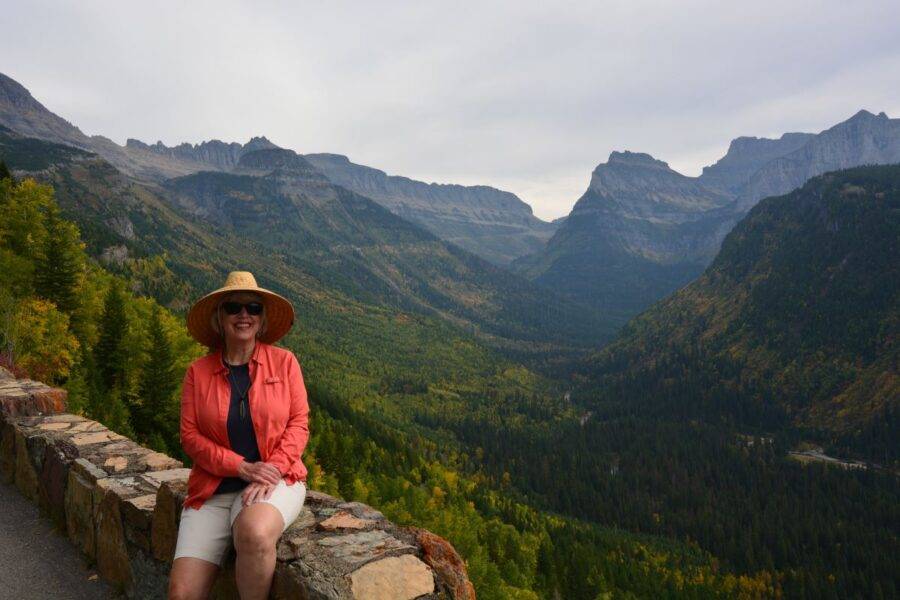

Glacier National Park was my last hope for seeing and photographing a grizzly bear in the wild. It didn’t happen, but Kathy and I enjoyed lots of scenes like this.
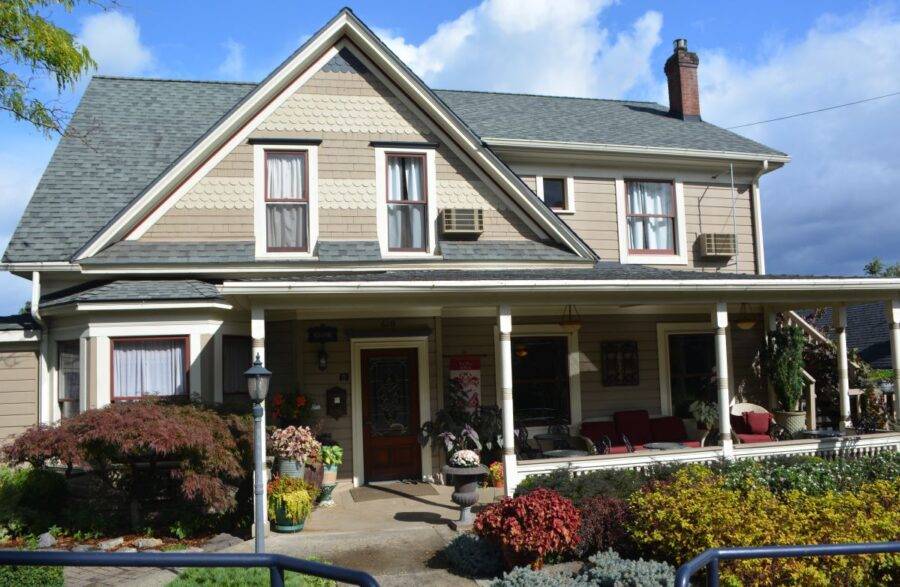

On our way back to California, Kathy and I stayed at the Oak Street Hotel bed and breakfast, in Hood River, Oregon, where the Hood, Columbia, and White Salmon rivers converge. We had a delightful dinner at the Three Rivers Grill, directly across the street. The next morning during breakfast, we had a wonderful visit with Haley, the Oak Street Hotel innkeeper, and Denise, the owner.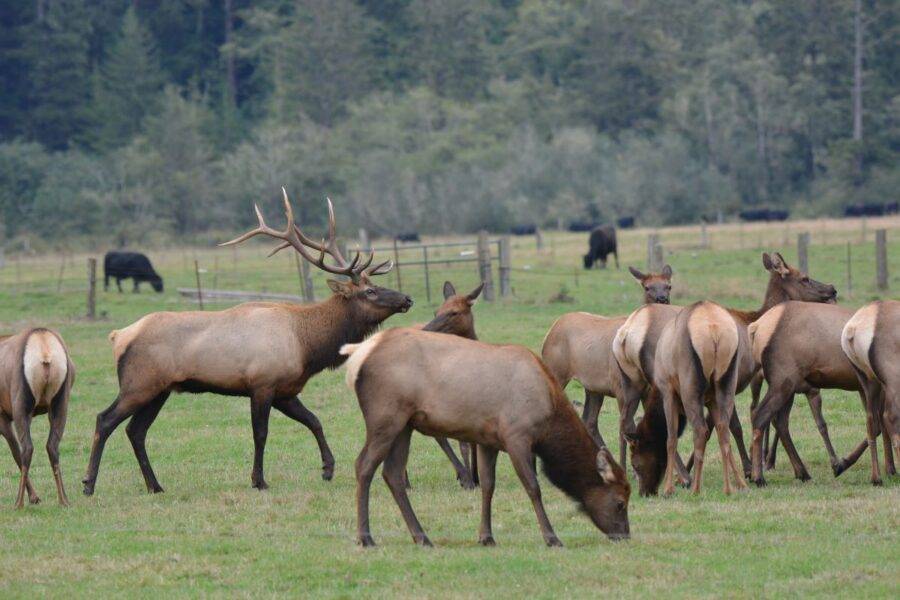

Our nineteen-day, 8,000-mile road trip wouldn’t have been complete without driving through California’s North Coast redwoods and photographing some of the wildlife that call this magical place home.
We never did see that grizzly bear, but there’s always next year! They tell me Alaska is the place to go.


Tryg Sletteland
Steve and Kathy,
Thanks sending me your write-up describing your latest trip. What a spectacular trek, loaded with wildlife!
The photography was awesome!
Steve
Good to hear from you, Tryg! Thank you so much for the kind words.
Tony
Phenomenal story and trip, Steve! Insanely envious! Rest assured if I ever try even a quarter of this trip, I will use your feedback for places to stay and see!!
Steve
You’ve made my day, Tony! Thank you so much.
Marcella Bishop
Early morning coffee while traveling with you and Cathy was such a delight. Thank you so much. Waiting for another book.
Steve
Thank you so much for writing, Marcella. Your support and encouragement mean a great deal to me. I’m currently editing my fourth book and second novel. I hope to have it to the publisher soon. Take care, and have a wonderful Christmas.
Larry Lopez
Steve, thank you so much for sharing your and Kathy’s wonderful trip! Your detailed writing made me feel almost as if I were there, too! Keep up the good work, my friend!
Steve
Larry, I can’t thank you enough for your kind words. I’m so glad you enjoyed reading about our trip. I hope you and Pam are doing well.
Helen Finnegan
Thank you for sharing your wonderful trip. Love this beautiful country. We saw bears in Denali.
Steve
Helen, thank you so much for writing. It’s interesting that you brought up seeing bears in Denali; Kathy and I have decided to make Alaska our next destination. Take good care!
Mike Nellor
Thanks Steve for taking us your amazing adventure. 8000 miles of wild and scenic territory,
Can’t wait to hear the rest of the story, we’ll see you soon!
Steve
Thanks for writing, Mike. It pleases me greatly to know you enjoyed my post. Kathy and I are looking forward to seeing you and Barbara soon!
The Hodges in Hines
What an incredible adventure and fun read. Awesome photos, too. We’re so glad you chose to stay with us and enjoyed our time with you. Three books are displayed prominently in the rec room for all to enjoy. Here’s to the next road trip!
Steve
We’re so glad we had a chance to meet you and Roger, Shani. We loved our stay with you and look forward to our next stay. Thank you so much for your kind words!
Kit Harvey
What a delightful journal of your trip! It sounded like a fun adventure. Hearing where you stayed was a nice bonus.
I just returned from Harrison Mills, BC, Eagle Festival! It’s always a fun adventure! Have you ever heard of a beaver eating fish? I was blessed to video & take pictures of one! 😍
I’m still waiting for your book signing in Redding! 😍🦅🐾
I hope to see you and Kathy soon!❤️
Steve
I’m so glad you enjoyed the blog post, Kit. Thank you so much. Your trip to the Eagle Festival sounds fascinating. Like you, I thought beavers were strictly herbivorous and only ate plants. I look forward to seeing your photos. Thank you, also, for asking about the next book signing in Redding. Barnes and Noble has invited me to be part of their grand opening in the next couple of months. I will keep you updated. Thank you for all your support!